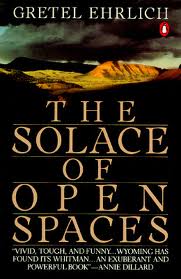Queenan, Joe. One for the Books. New York: Viking. 2012. Print
The average American reads four books a year, and the average American finds this more than sufficient.
Men who run for high office often deem such a vertiginous quota needlessly rigorous, which is why they are sometimes a bit hazy on what Darwin actually said about finch beaks and can never remember which was Troilus and which was Cressida.
I am up to speed on both. Yet I find this no cause for celebration, much less preening. For though I read at least a hundred books a year, and often twice that number, I always end up on New Year's Eve feeling that I have accomplished nothing.
Description:
Book readers are a select group of humans. Bibliophiles are in an even smaller, more passionate sub-species of this group. And then there's Joe Queenan, author of One for the Books.
In this intelligent, fascinating, and sometimes wacky book, Queenan describes all aspects of his existence as a passionate book reader, including his preferences and dislikes in authors and topics, bookstores, and libraries, as well as strong opinions on borrowing/lending books, writing notes in books, and finishing a book.
Queenan estimates he is actively reading thirty-two books at any given time. He admits to having read between 6,000 - 7,000 books in his lifetime, broken down into about 150 books a year not including titles he reviews for newspapers and magazines. Of course, he never speed-reads a book as "that would defeat the purpose of the exercise, which is for the experience to be leisurely and pleasant."
We learn he uses several techniques to select a book: by its book jacket design; by the the blurbs written on the back cover by writers he respects; and even by its length (once spending a year reading only short books). And he favors reading books where a reviewer has used the word "astonishing" to describe the work, but refuses to read any book with that same word occurs in the title (e.g., The Astonishing Life of Octavian Nothing, Traitor to the Nation).
At his age (60 something), he calculates he could read "2,138 books" before he dies, therefore he must be careful about what titles he will consider reading in his years left. He has time for "500 masterpieces, 500 minor classics, 500 overlooked works of pure genius, 500 oddities, and 168 examples of first-class trash."
This means, of course, there are books he knows he will never read unless he is paid to do so. His black-listed books include anything recommended and loaned to him by friends, books on current affairs, biographies, inspirational themes, books written by businessmen, and anything electronic.
Also eliminated from consideration is anything written by an author involving a character Queenan knows to be a lover of the New York Yankees, Los Angeles Lakers, Dallas Cowboys, Duke University basketball, University of Southern California football, or Manchester United soccer team. Such people are beneath contempt and certainly not worth his time to read.
What books he loves, he LOVES. He admits to skipping work for a week to "lie on the sofa and read ten Ruth Rendel novels." After discovering Penelope Fitzgerald's The Bookshop, he immediately bought and read all of her works, as he did with Henning Mankell and his Kurt Wallander Scandinavian detective novels.
His strong opinion reveal a love and devotion to books that are inspirational and jaw-dropping at the same time, such as his future reading goals (e.g. reading one book a day for a year, re-reading all books in his collection that he has already read twice, reading only books picked off public library shelves "with my eyes closed," etc.). Other reflections are more poetic including the serendipitous pleasures he experienced via print books vs. electronic books.
Queenan is a confident, intelligent, and discerning reader, When he praises one of your own personal favorites like Philip Roth's Great American Novel or Huckleberry Finn, you feel a smugness that your taste in reading has passed a test of some sort.
However, it is admittedly deflating when he denigrates a book or author you enjoy, as he does for To Kill a Mockingbird (one of the school-assigned "featherweight homilies"), P.G. Wodehouse (a "poncey aristocrat who played footsie with the Nazis"), and David Benioff's City of Thieves (because the narrator/survivor of the siege of Leningrad eventually emigrates to the US and becomes a Yankee fan).
I loved this book and Joe Queenan for his cleverness, his obsession, his high-quality writing, and his unwavering standards of what should and should not be read. If you love reading about books and looking for new titles to pursue, One for the Books is a fantastic world to explore.
Happy reading.
Fred
Comments
Previous posts_______________
Sankovitch, Nina. Tolstoy and the Purple Chair: My Year of Magical Reading
The author tries to deal with her grief for her sister's death by committing to read a book a day and then write a review of each for her website (readallday.org). Great bibliography of the books she read as well as insight into how books and memoirs can help deal with sorrow.
Basbanes, Nicholas A. A Gentle Madness: Bibliophiles, Bibliomanes, and the Eternal Passion for Books
A wonderful history of book collectors and their collections, delightful in its portrayal of the quirks, passion, and overwhelming commitment to purpose shown by this bibliophiles.







